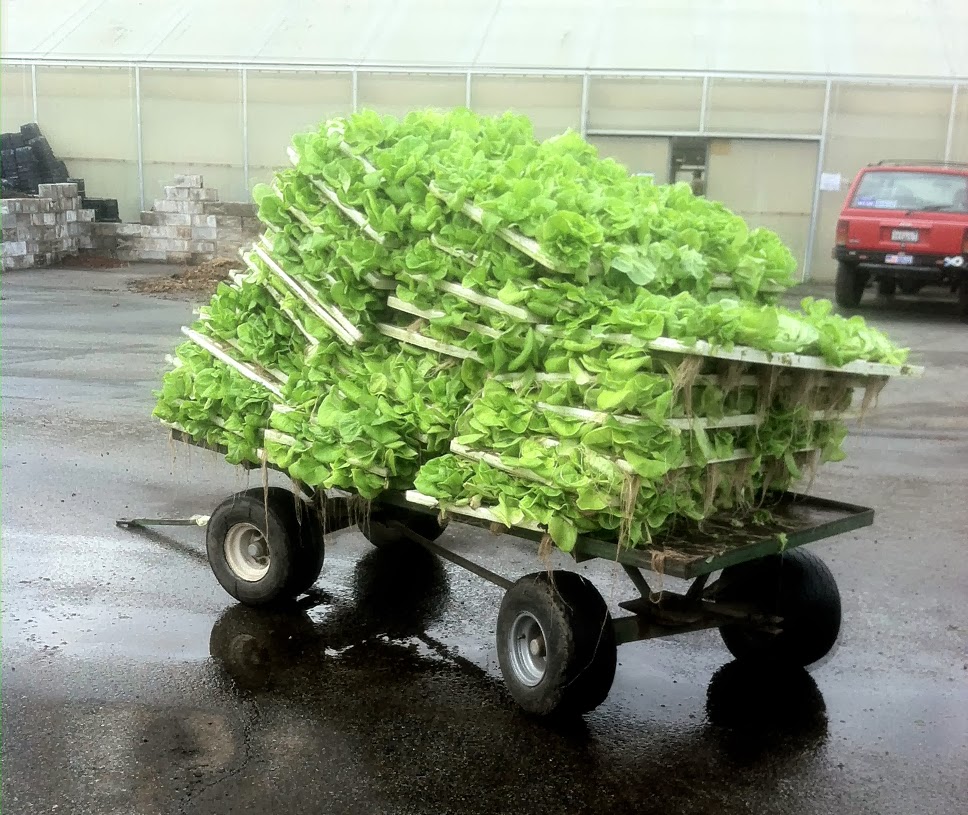Two weeks ago I begun to volunteer as a WWOOFER(Willing Worker on Organic Farms) at Viridis Aquaponic Growers
In Watsonville. Viridis offered a volunteer labor program with an
aquaponics class and Q & A session at the end of the work day,
awesome!, the best place to learn is working hands on at real commercial
aquaponics facility.
Viridis Aquaponic Growers
began operating in Watsonville Ca, in August of 2013 and at 8 acres is
now the largest commercial aquaponics farm in the world.The first day was real learning experience as I was put right to work destroying lettuce that acquired a mildew due to over heating in the greenhouse over the previous weekend. This of course made me extra conscious of temperature and humidity in our greenhouse.
Cart full of unusable lettuce.
Empty raft units after mildewed lettuce was pulled.
 |
| Replanting: This process is very quick, inserting seedling plugs into the rafts then setting them afloat in the raft tank. |
 |
| Catching loose fish in the raft tank. |
Aside from removing and destroying lettuce all day it was great to be able to see how how a commercial aquaponics greenhouse works and what systems they use.
 |
| Aquaponics fish tank and filter system |
 |
| 100ft long aquaponic raft system. |
Yup , pretty amazing.



